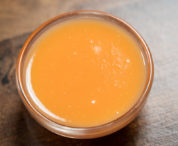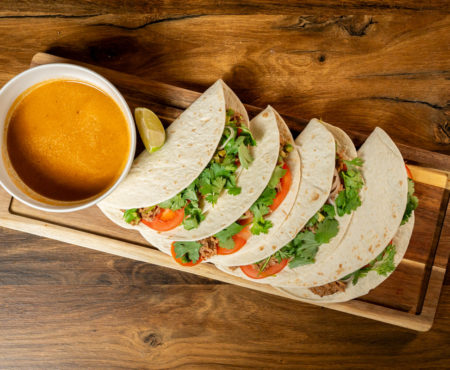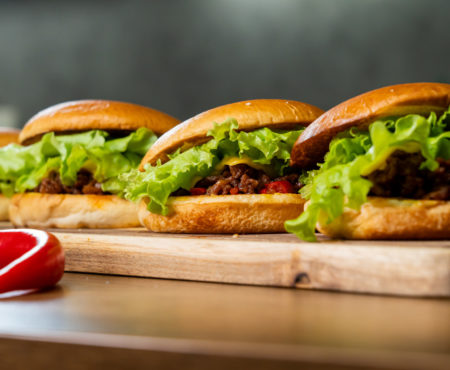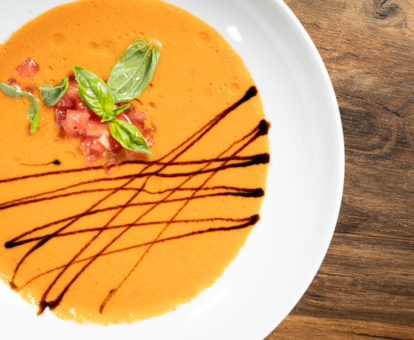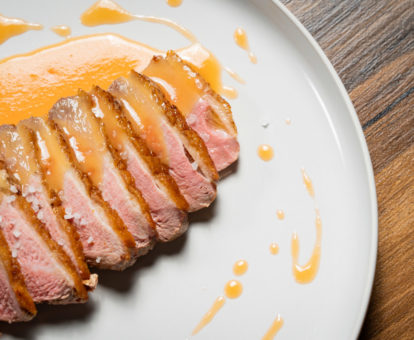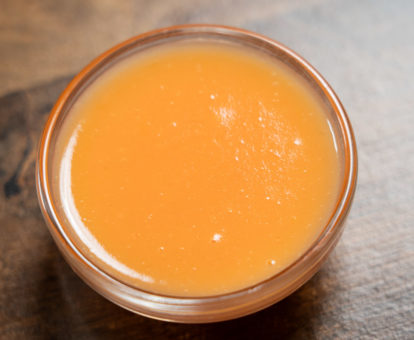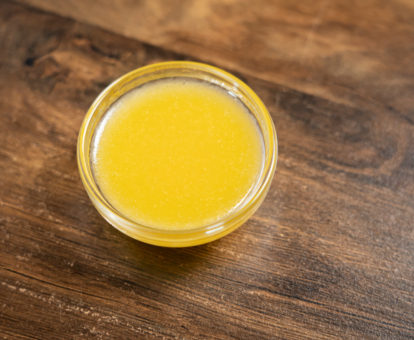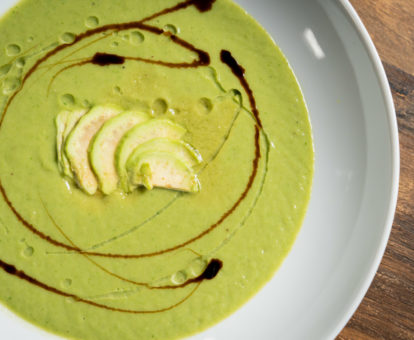Indulge in the heart-warming goodness of the classic spaghetti and meat sauce! This recipe features perfectly cooked spaghetti, generously coated in a rich, savory meat sauce made with the finest ground beef. The tender and juicy beef adds a delicious depth of flavor to the sauce, making it an irresistible treat for your taste buds. Gather your loved ones around the dinner table and watch them relish every bite of this delectable dish.
Spaghetti with meat sauce is a timeless classic that brings comfort and satisfaction to countless dinner tables. The combination of perfectly cooked spaghetti and a rich, savory meat sauce is a culinary embrace that warms the heart and soul. Whether you're sharing it with family or enjoying a comforting solo meal, this dish never fails to deliver. When creating this sauce, the key is to let it simmer patiently, allowing the flavors to meld and deepen into a rich, aromatic masterpiece. It's a celebration of simple ingredients that, when treated with care, result in pure culinary magic.
Make spaghetti sauce with ground beef using this guide.
Preparing restaurant-quality spaghetti sauce with ground beef is only a few steps away. Check out the full recipe below, and here’s a brief summary of what you can expect:
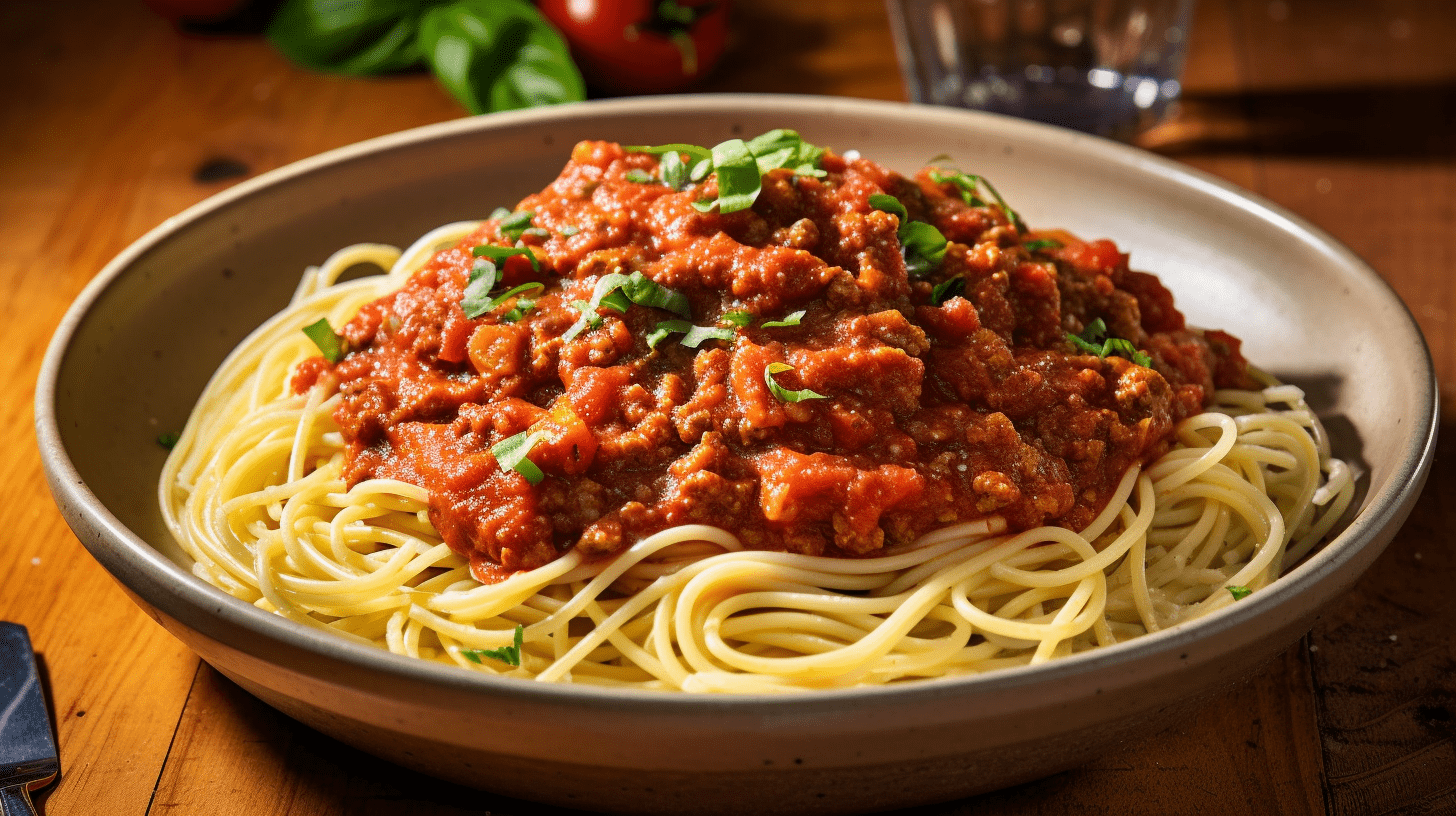
Cook Beef and Veggies
Cook the ground beef along with garlic, onion, and green pepper until it turns brown and crumbly. Vegetables should be tender.
Add Tomato Products and Season
Add diced tomatoes, tomato sauce, and tomato paste to the beef mixture. Stir well and add oregano, basil, salt, and pepper. Simmer the sauce until it thickens and becomes aromatic. Then, pour it over the cooked spaghetti noodles and serve.

Troubleshooting Spaghetti Sauce
If your spaghetti sauce didn’t turn out how you wanted, there’s probably an easy fix.
How to Thicken Spaghetti Sauce
The purpose of this recipe is to make a thick spaghetti sauce. However, sometimes things don’t go according to plan, and you may end up with a runny consistency. If this happens, there are a few ways to thicken it. One option is to simmer the sauce for a few extra minutes. This will help reduce some of the excess liquid, leaving you with a thicker, more flavorful sauce.
For a quicker thickening method, create a slurry by combining equal parts of water and cornstarch. Gradually stir the slurry into the sauce until the desired consistency is achieved.
What Herbs to Add to Spaghetti Sauce
This recipe is highly rated and requires garlic, oregano, basil, salt, and pepper. However, feel free to adjust, eliminate, or add seasonings to your liking. To personalize this spaghetti sauce, you can add parsley or give it some kick with crushed red pepper. Just remember to taste the sauce every time you add an ingredient to ensure you don’t add too much or too little.
How Long to Simmer Spaghetti Sauce
We really enjoy the texture and taste of this spaghetti sauce when it’s been simmering for about an hour. If you prefer a thinner sauce, you can reduce the cooking time slightly. On the other hand, if you want a thicker sauce, you can let it simmer for a bit longer.
What Goes With Spaghetti?
Are you searching for a tasty food item that would go well with your spaghetti and meat sauce?
Consider trying one of these irresistible ideas:
- Toasted Garlic Bread
- Panzanella Salad
- Caesar Salad Supreme
- Quick and Easy Garlic Broccoli with Parmesan
- Sauteed Zucchini

How long can spaghetti last in the fridge?
It is important to store your cooked spaghetti noodles and ground beef sauce separately. The noodles can be kept in an airtight container in the refrigerator for up to five days. On the other hand, the ground beef sauce should be stored in an airtight container in the fridge and consumed within three to four days. This way, you can keep your food fresh and safe to eat. When you have leftover spaghetti, you can reheat the noodles and sauce separately and then combine them before serving.
Can You Freeze Spaghetti Sauce?
Yes, you can definitely freeze spaghetti sauce. It’s a convenient way to manage leftovers and prepare meals in advance. To freeze spaghetti sauce, use a ladle to portion it into zip-top freezer bags according to the desired serving sizes. Remove any excess air from the bags, seal them securely, and label them with the date. Lay the bags flat in the freezer and store them for up to six months.
How to Reheat Frozen Spaghetti Sauce
There are two ways to reheat refrigerated spaghetti sauce: microwave it in 10-second increments while stirring between each increment, or reheat it on the stove while stirring frequently.
Thaw frozen spaghetti sauce in the fridge overnight. To reheat thawed sauce, place it on the stove and stir it frequently.

1 Gather all the necessary ingredients.
2 Ground beef, onion, garlic, and green pepper are combined in a saucepan over medium-high heat. Cook and stir until the meat is browned and crumbly, and the vegetables are tender – approximately 5 to 7 minutes. Drain the grease.
3 Stir diced tomatoes, tomato sauce, and tomato paste into the pan. Season with oregano, basil, salt, and pepper. Simmer spaghetti sauce for 1 hour, stirring occasionally.
4 Serve it hot and enjoy!
Calories: 185
* Percent Daily Values are based on a 2,000 calorie diet. Your daily values may be higher or lower depending on your calorie needs.
** Nutrient information is not available for all ingredients. Amount is based on available nutrient data.
(-) Information is not currently available for this nutrient. If you are following a medically restrictive diet, please consult your doctor or registered dietitian before preparing this recipe for personal consumption.
Powered by the ESHA Research Database © 2018, ESHA Research, Inc. All Rights Reserved
To achieve a truly exceptional meat sauce for your spaghetti, take your time while simmering. Letting the sauce cook low and slow allows the flavors to marry and intensify. This process not only thickens the sauce but also gives it a rich and harmonious taste. Don't rush it; the reward is in the patience. Also, if you're using ground beef with a higher fat content, consider draining the excess fat before adding the other ingredients to avoid a greasy sauce. And remember, the flexibility of this recipe means you can adjust the seasonings to match your personal taste preferences. Whether you opt for a pinch of red pepper flakes for a kick or a handful of fresh basil for a fragrant finish, make this classic your own!













